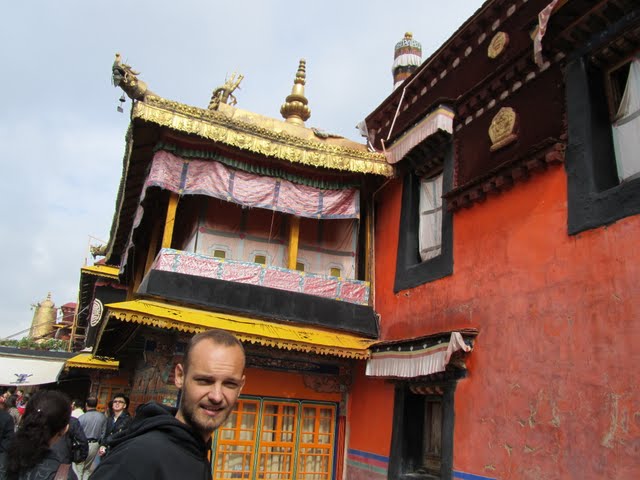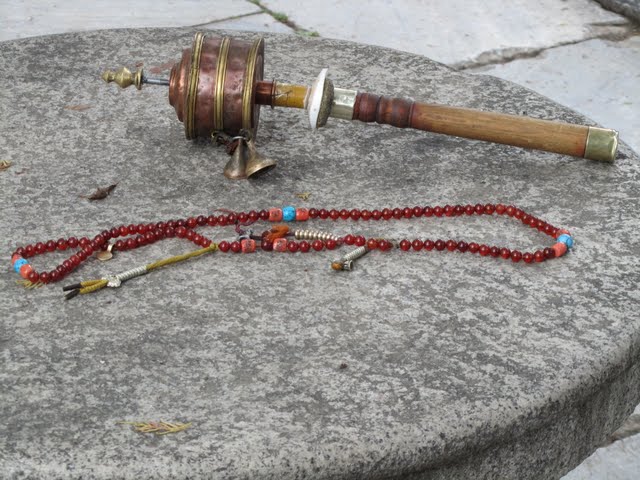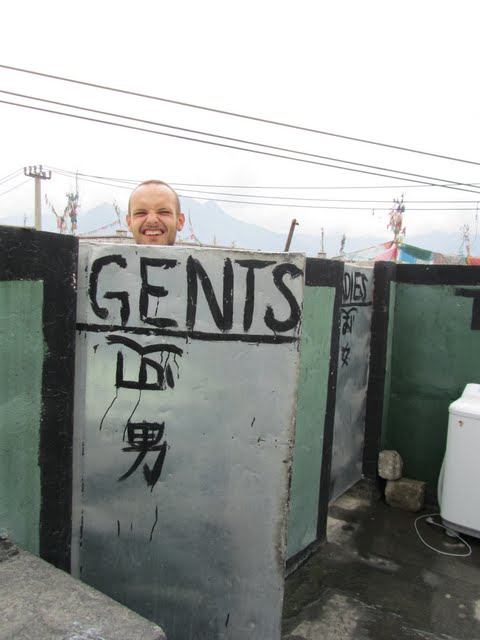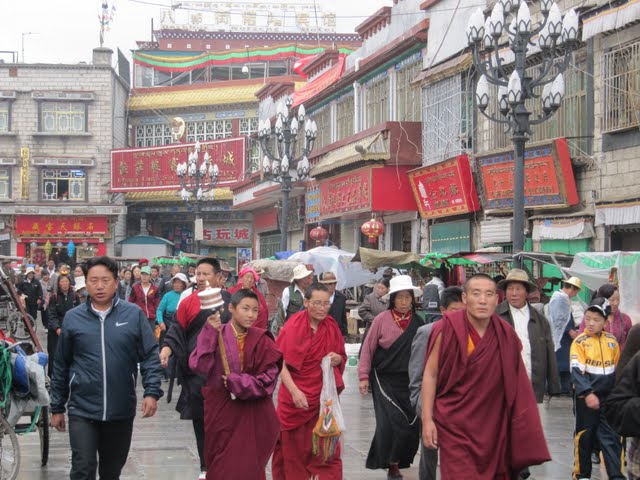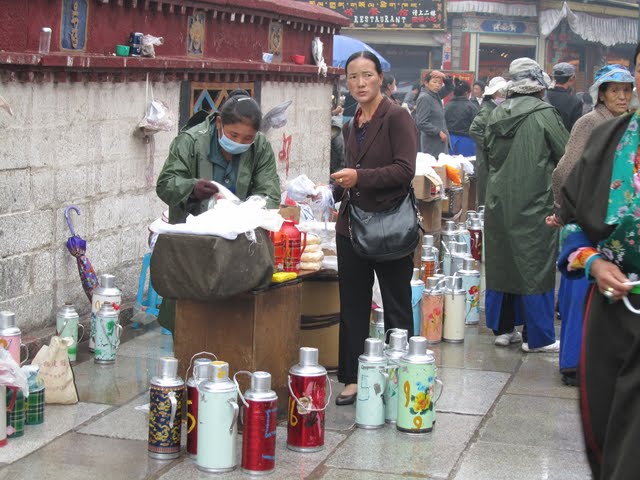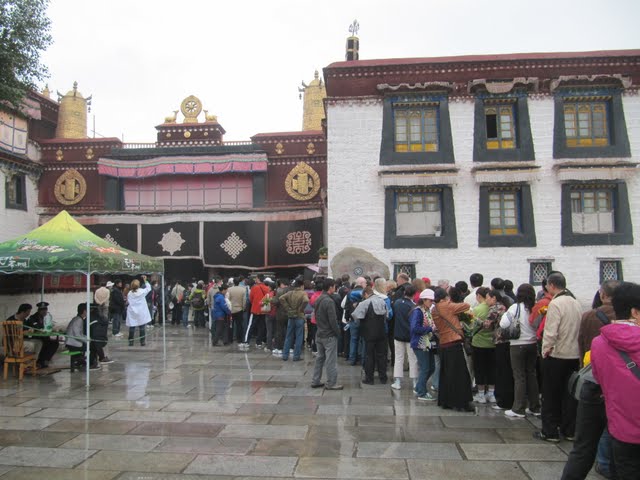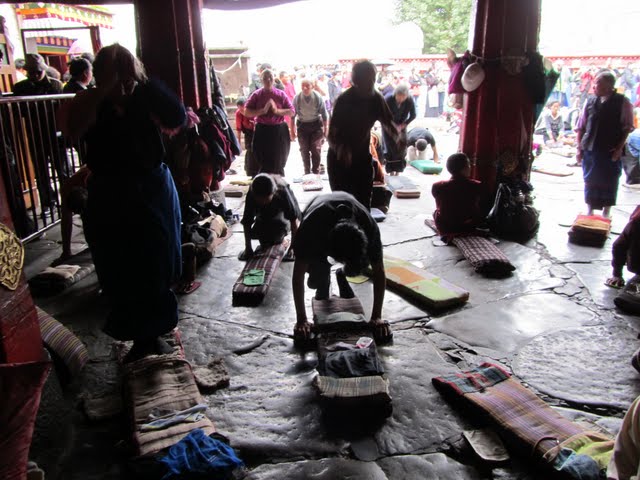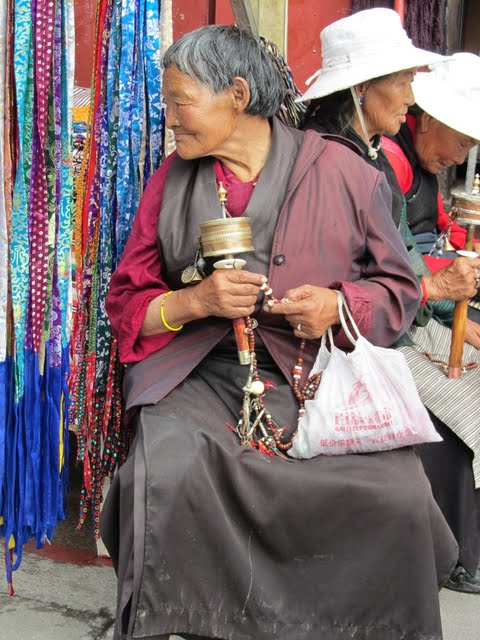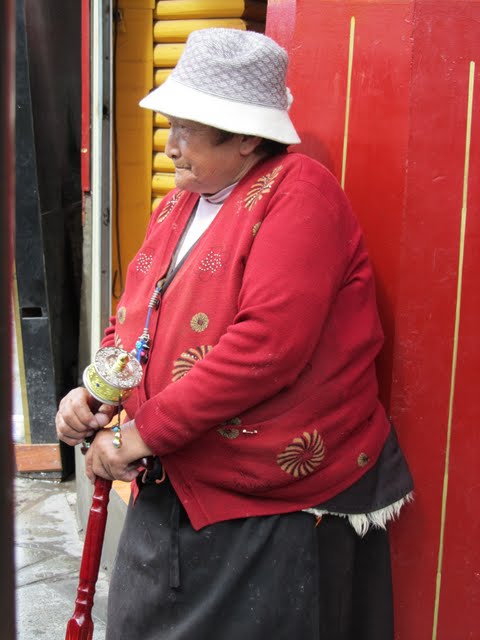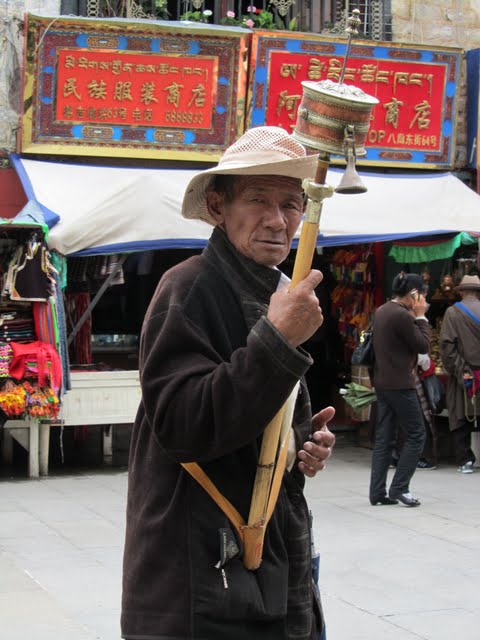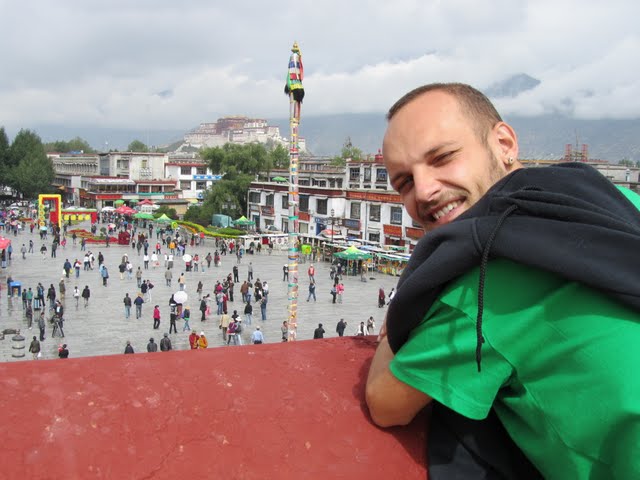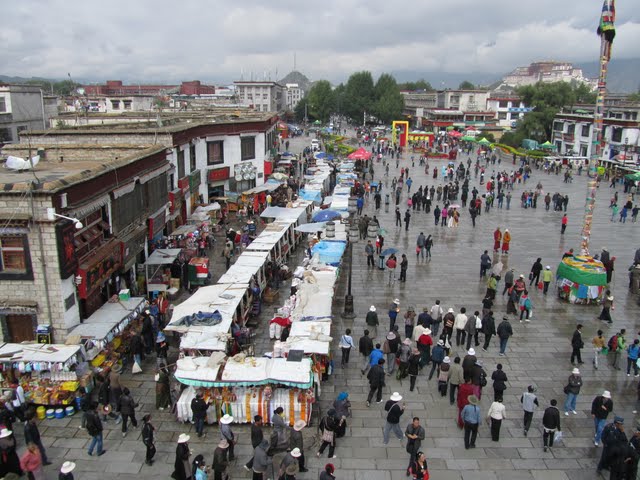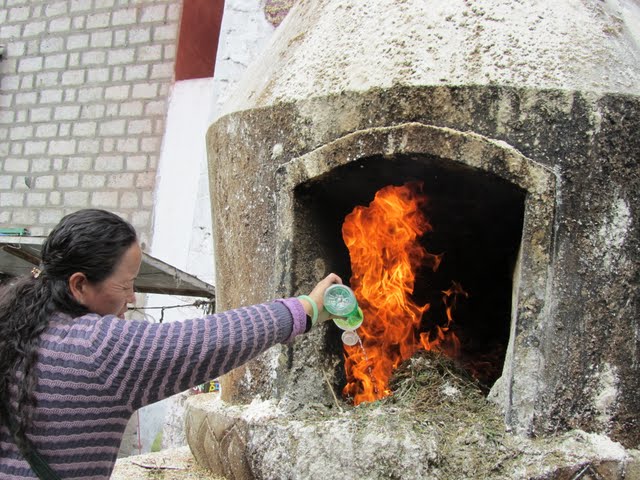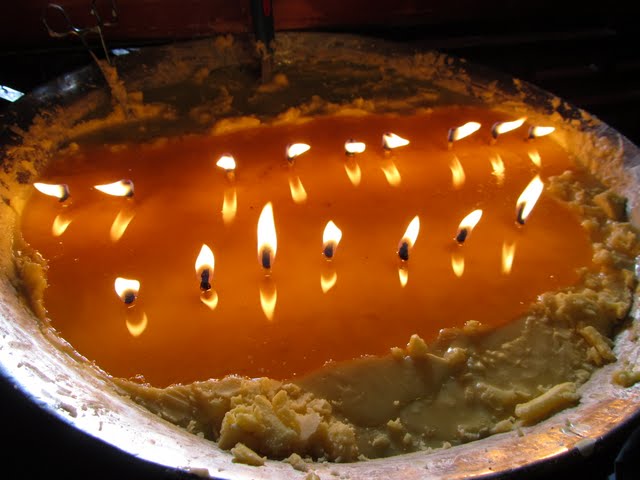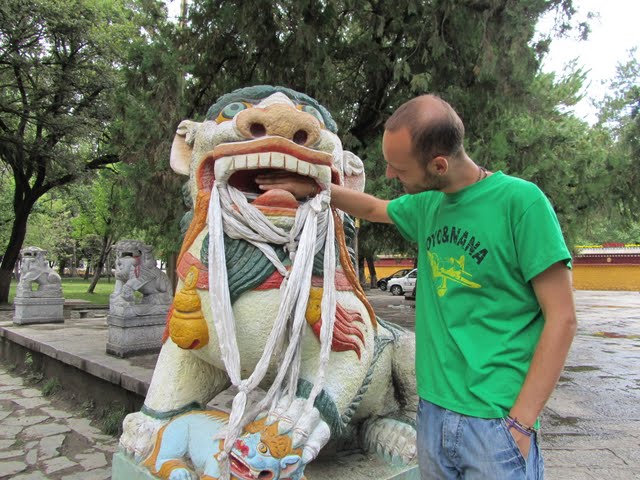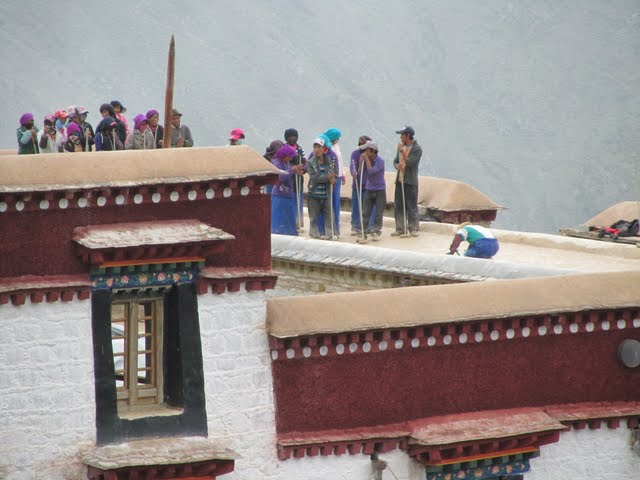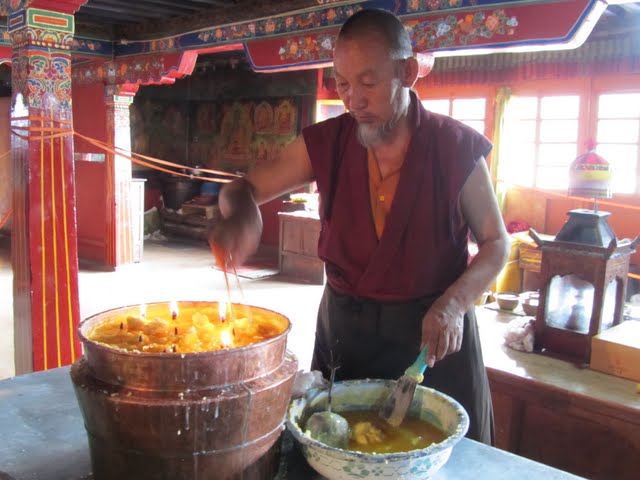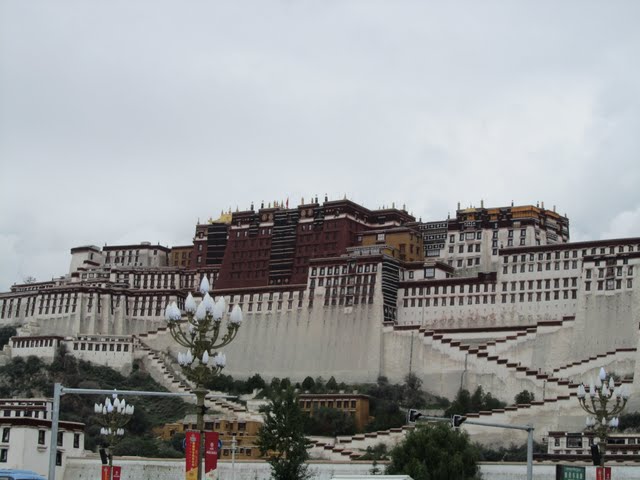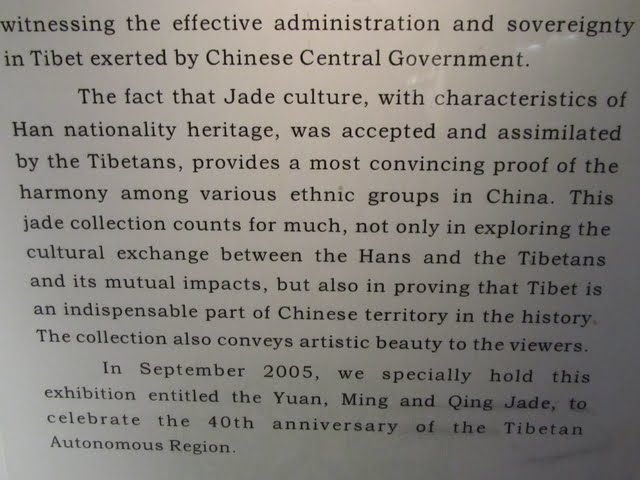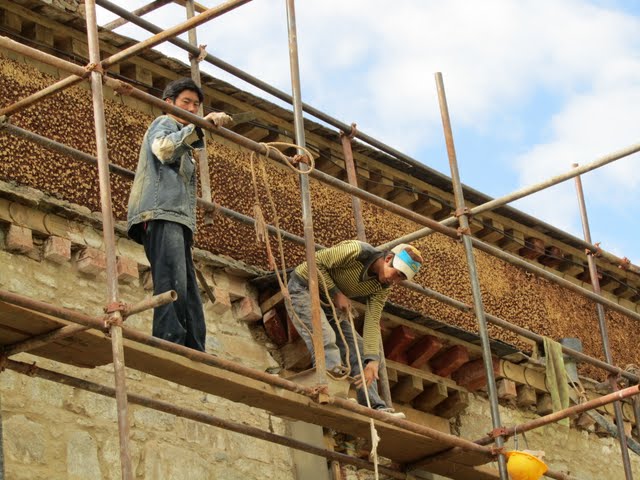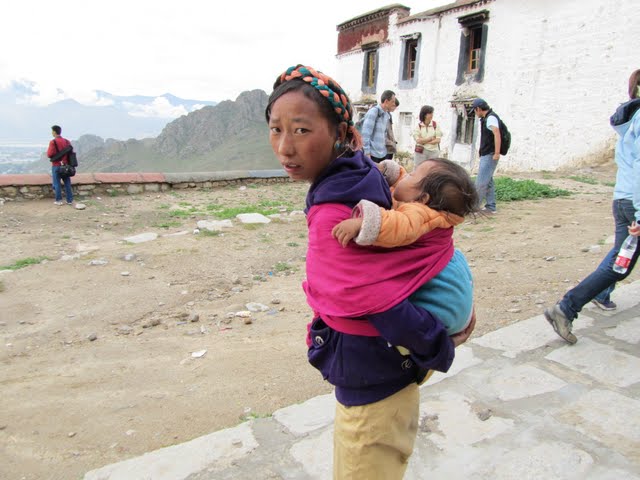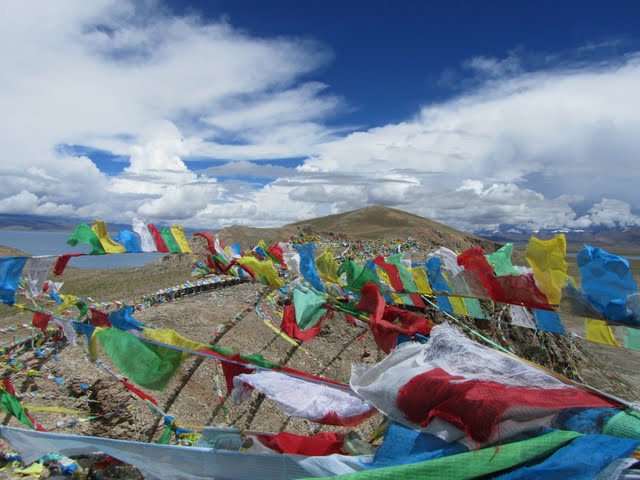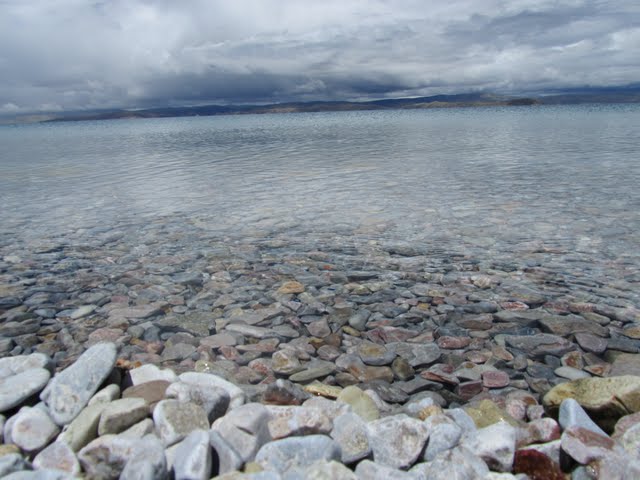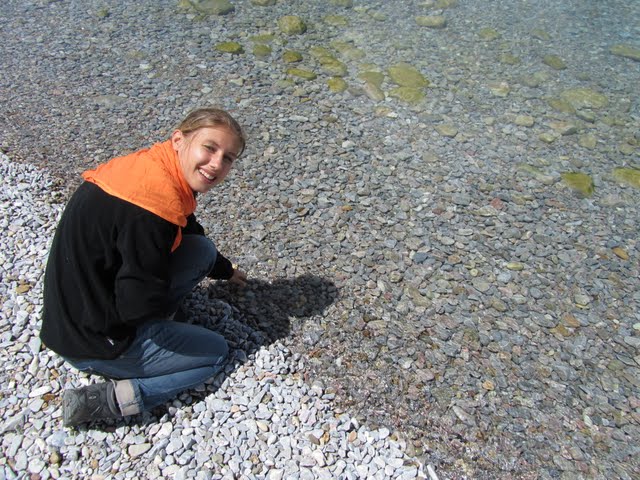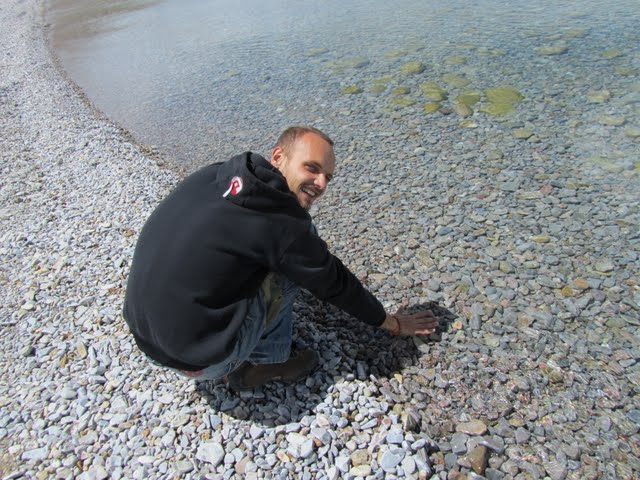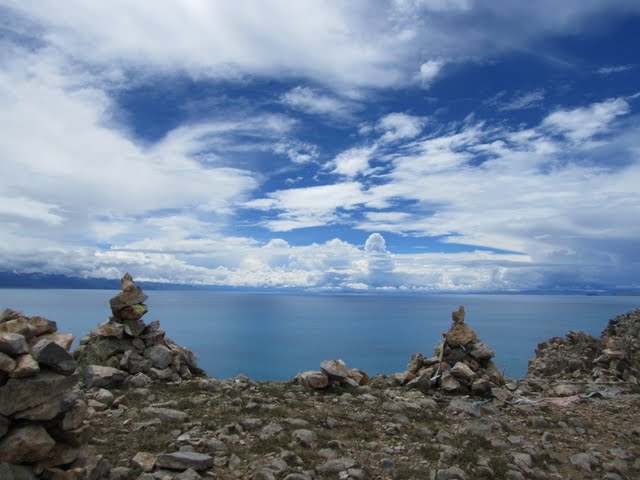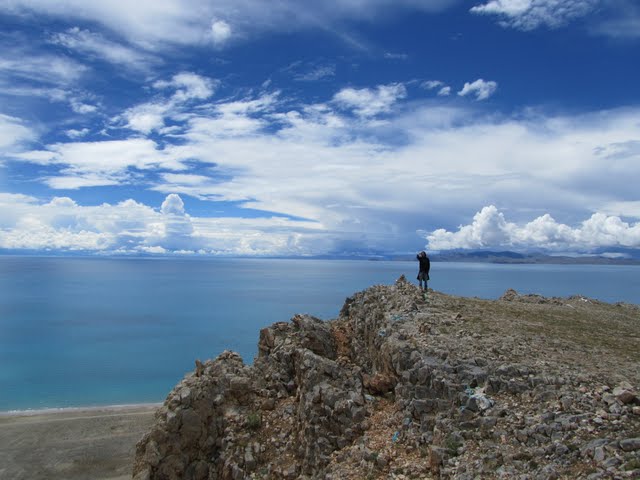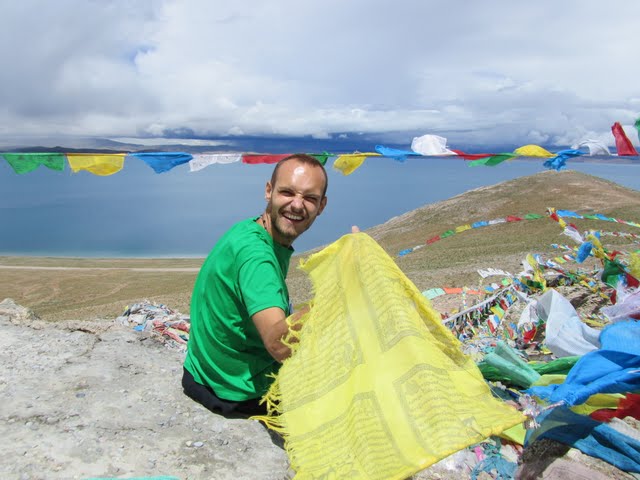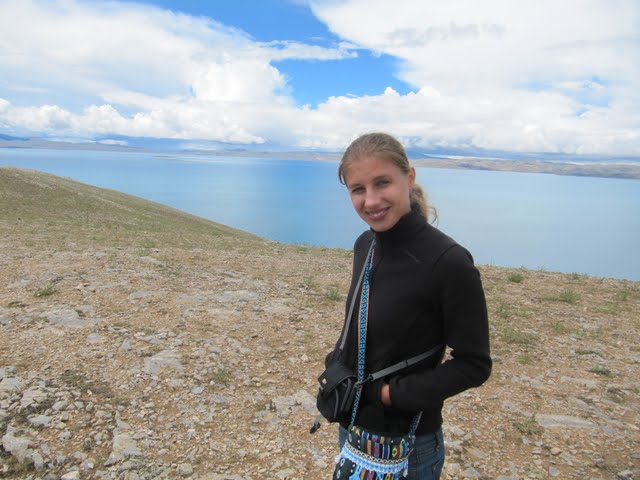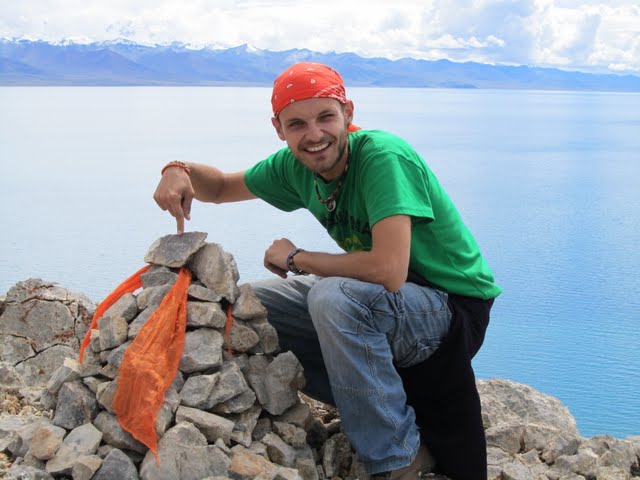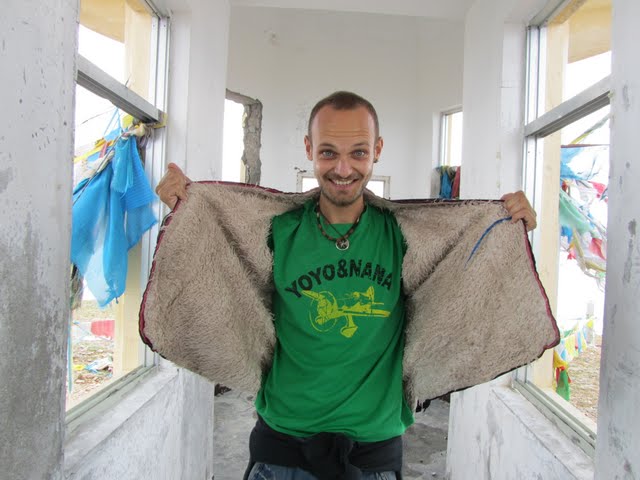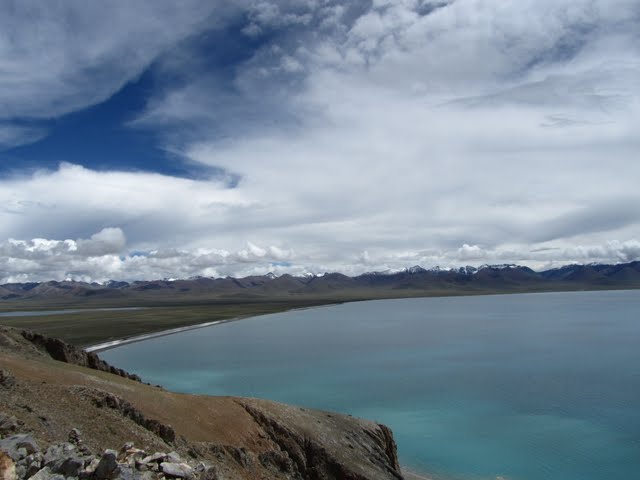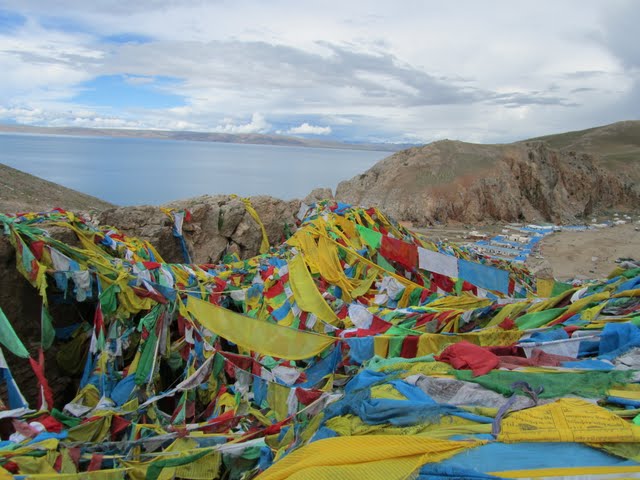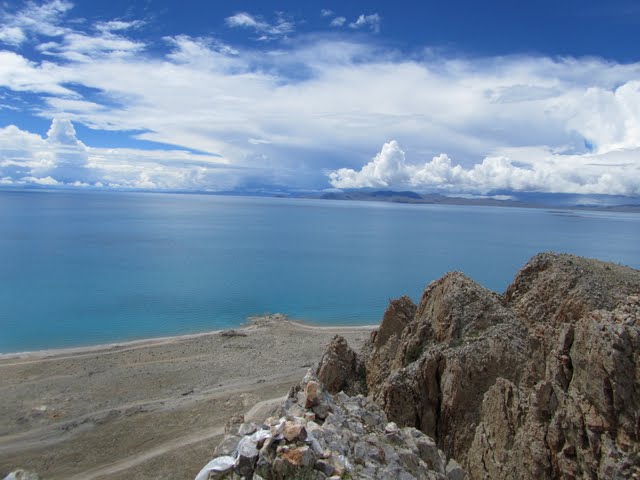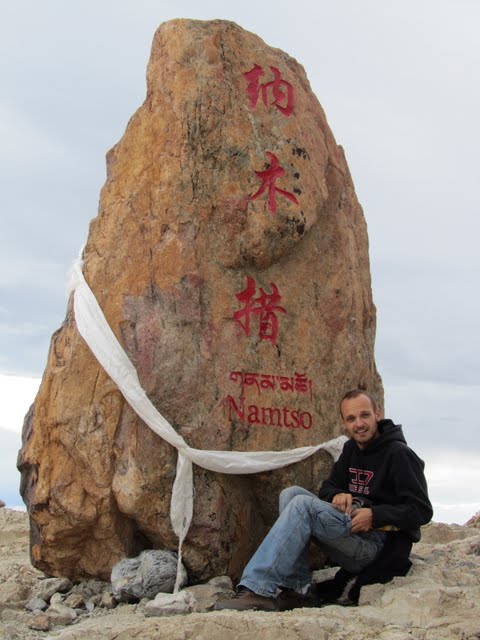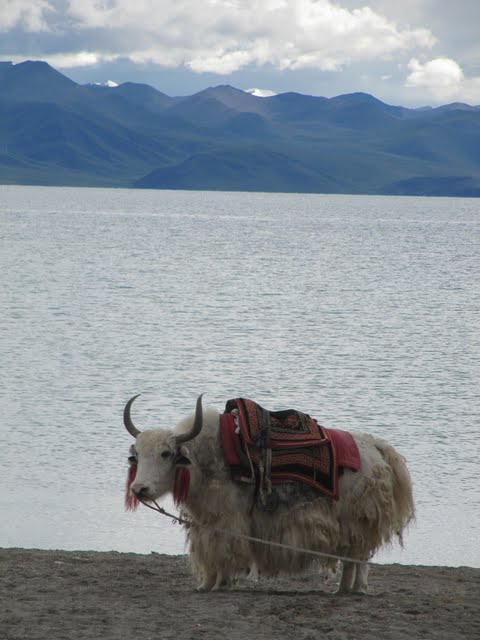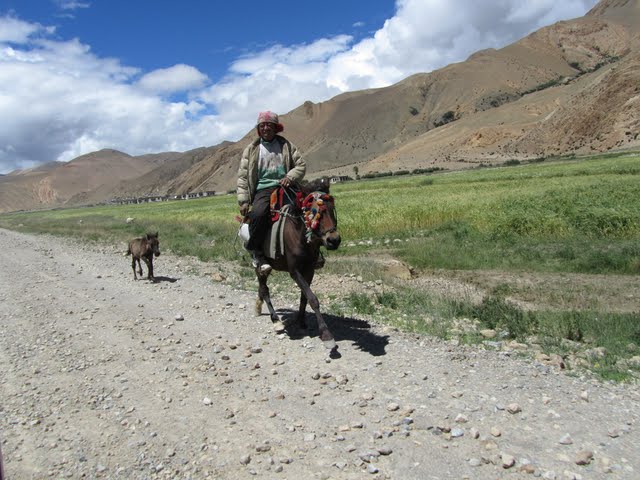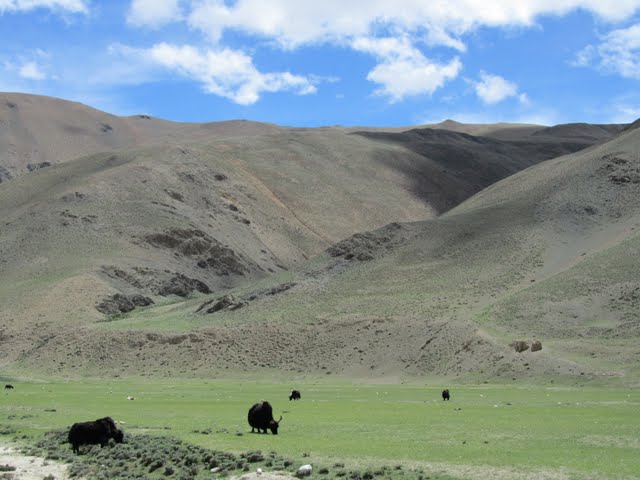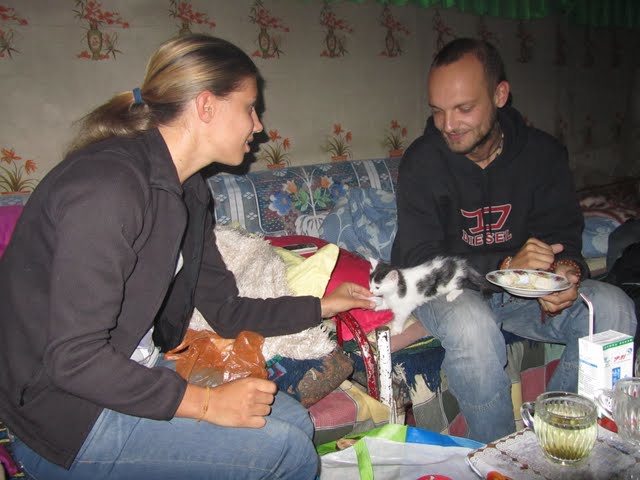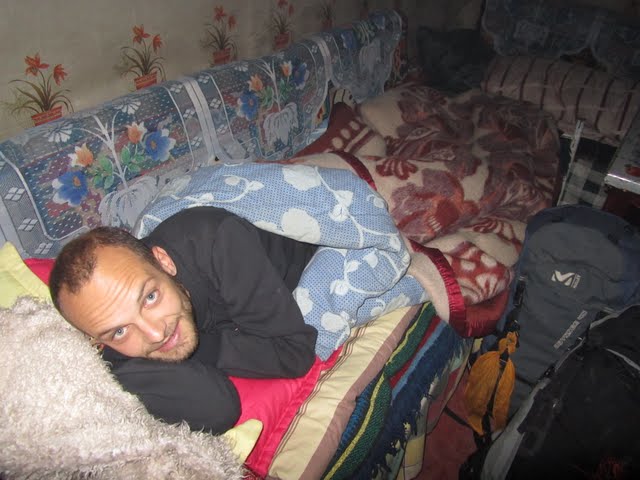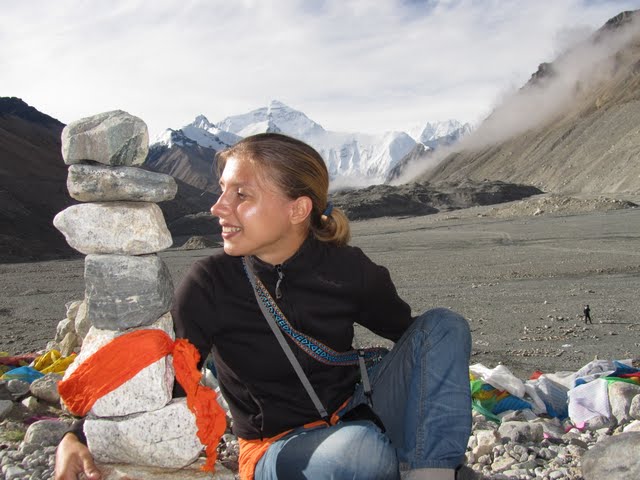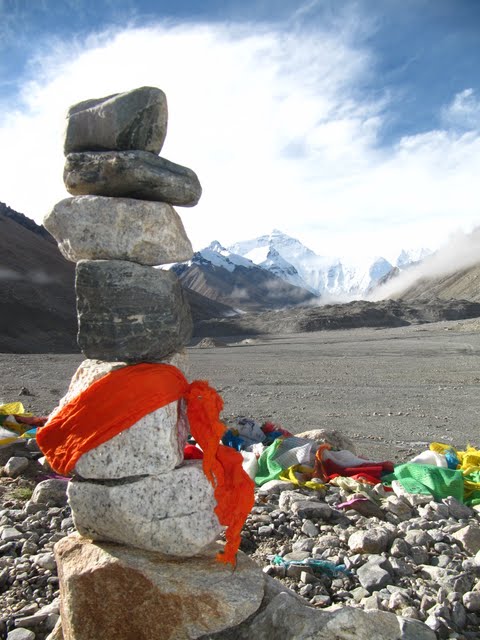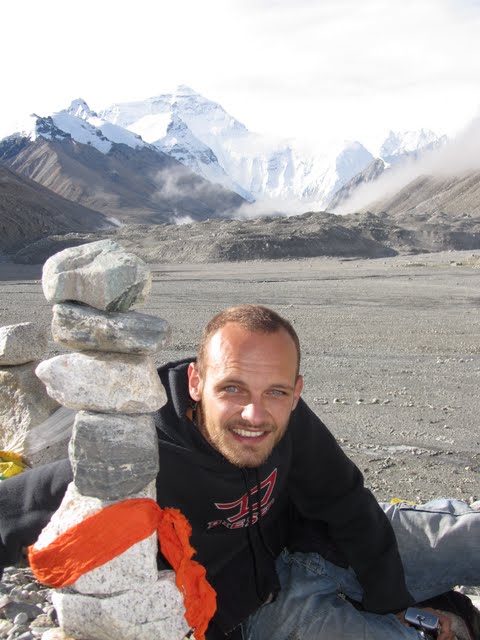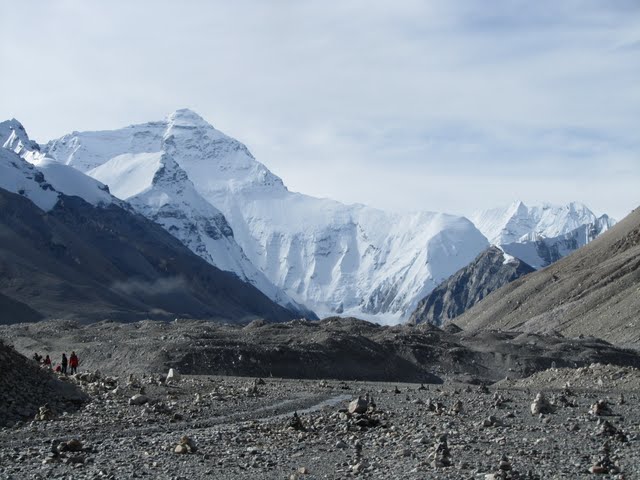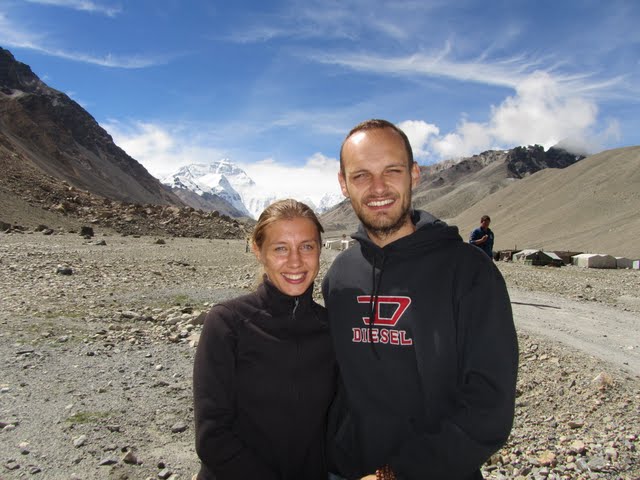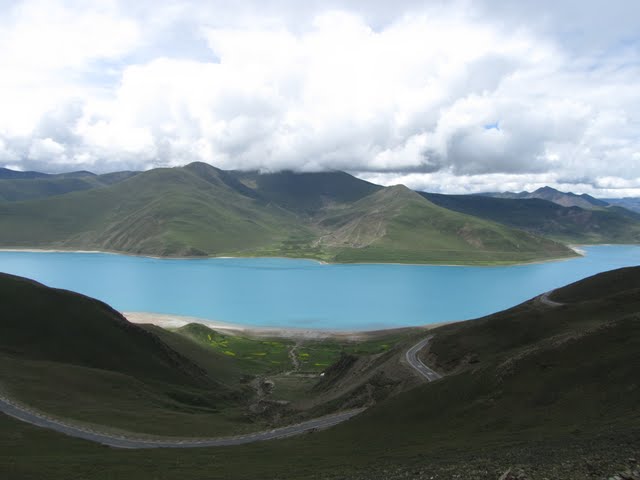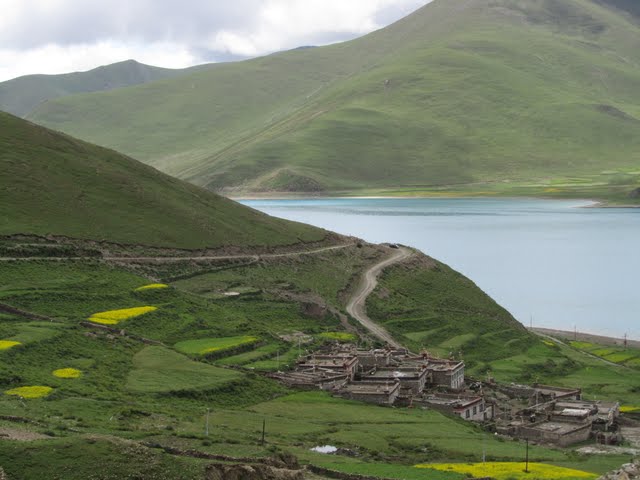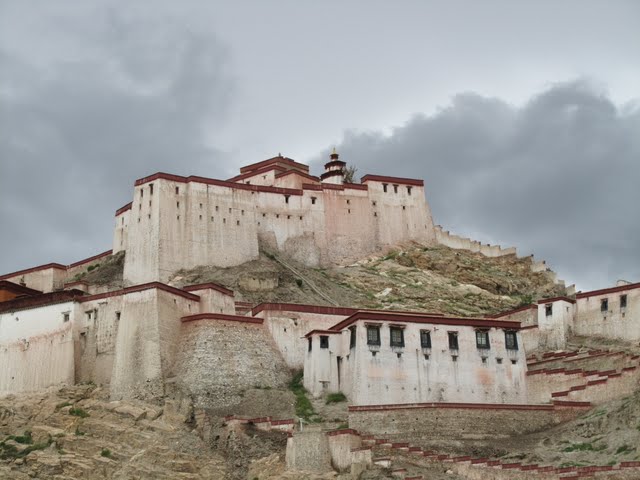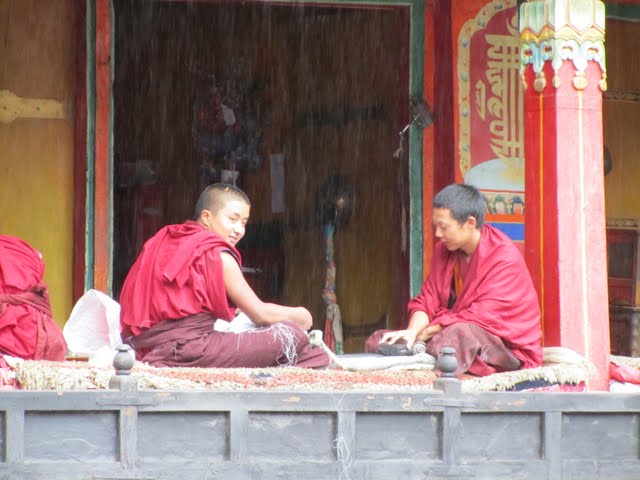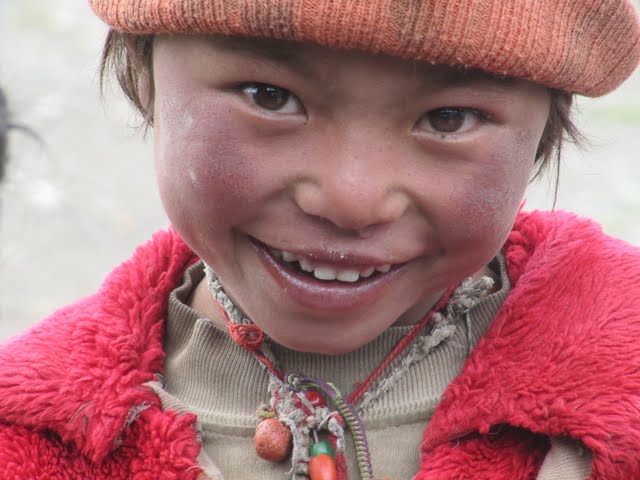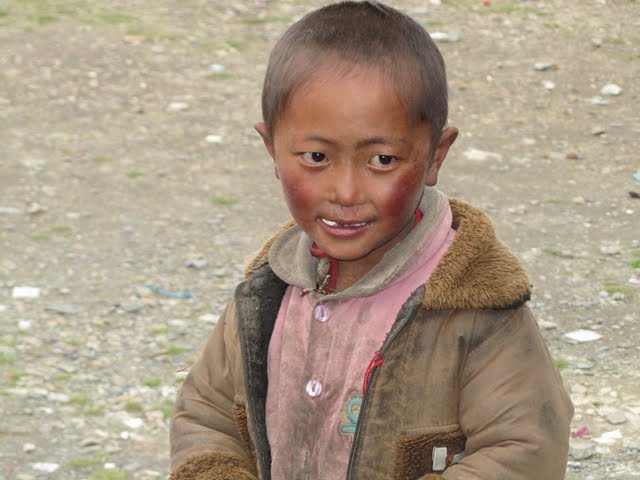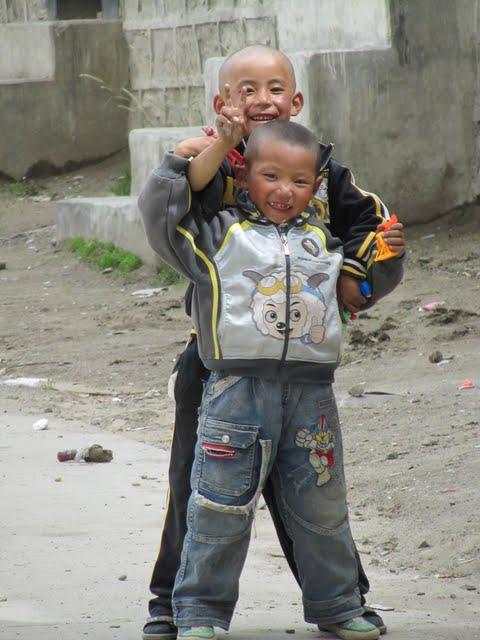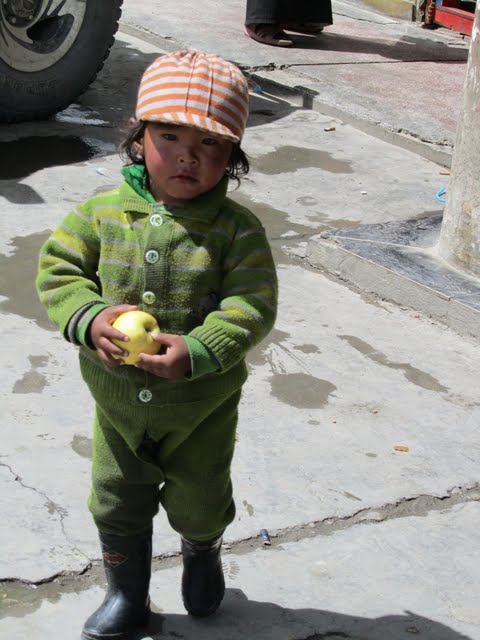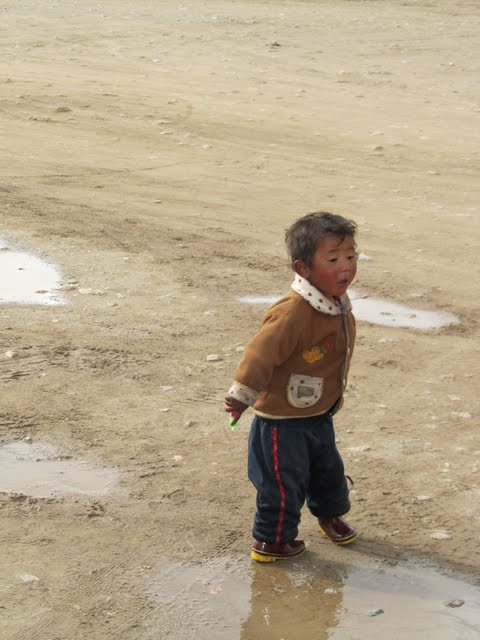Tibet - the heart of tantric Buddhism
On arriving in Lhasa we expected to see a guide holding a notice with our names. But among many notices we didn't see any meant for us, so we felt a little bit like orphans among all the people who were getting picked up. After a short while the guide did show up and till then we were entertaining ourselves looking at the views and the multiple Chinese soldiers at the station.
The guide turned out to be a young cheerful Tibetan guy with quite decent English. However, later we discovered that despite the spoken skills, he had difficulty understanding questions as well as answering them even if he understood, the main problem being the lack of knowledge on any subject beyond the names of buddhist deities.
We drove to our hotel in the centre of old Lhasa, and during the drive we were looking with curiosity at everything around - it was quite like what we expected, especially after our short stay in Shangrila.
Day 1:
Our first visit in the morning was to the Jokhang Temple. Located in the very centre of old Lhasa, it attracts hundreds of buddhist pilgrims and locals every day, all of whom make a kora around it (an english term for this walk around the temple in clockwise direction is circumbulation, and while performing it most locals keep swirling their prayer wheels). In fact before visiting this temple with our guide, we woke up with Jordi to have a short walk and on exiting the hotel saw a long queue of people.
Following the natural curiosity (and the queue) some 15 minutes later we arrived at the entrance of the temple. In front of it many pilgrims and locals were performing the prayer rituals that to any westerner would look like a tough exercise for the abs (from a standing posture you go all the way down to the ground with two wooden boards attached to your palms till you reach a lying posture and from there the reverse). In fact, later while traveling the country we saw some of those pilgrims using this exercise as the walking medium to reach the places of pilgrimage. It takes them extremely long, but that's how it's supposed to be done, and they claim to enjoy it.
So a bit later that day the guide brought us to the same temple but instead of taking the general queue we had to take a separate one for foreigners, paying the usual (in the best Chinese traditions) very high fee. The temple was very lovely, quite different from any buddhist temple we'd seen before. The atmosphere was very vibrant, filled with real devoted prayer, mantras, and the intoxicating sweet smell of that very unique mixture of yak butter and juniper incense that is so characteristic of Tibet.
We looked in fascination at the yak butter reservoirs which tibetans use as candles, with each devotee carrying liquid and solid supplies of this butter and refilling those reservoirs as an act of devotion. We saw a lot of monks reciting prayers in the numerous chapels of the temple. Chapel after chapel we would find multiple statues and portraits of Buddha, various deities and lamas, some of them really huge. Overall, this was the first and most striking temple we saw in Tibet.
Later that day we visited the Summer Palace (Norbulinka) used by dalai lamas as the alternative abode. Over there we found very modest constructions from a few of those dalai lamas who had enough financial support to build a palace for themselves. Apparently the 14th Dalai Lama also built one - it's the biggest one and the one that strikes you most with its sense of desolation due to the fact that this one was supposed to be used... Overall however, all the palaces were so simple and looking more like museums that we might have considered skipping the visit had we known this (especially that all through Tibet we kept paying the crazy Chinese entry tickets for every single place, but unlike in China - about 2-3 times a day due to the short time we had for this Tibet tour).
Day 2:
Next day we went to visit the very big and famous Drepung Monastery. Unfortunately at the time of our visit it was more of a construction site than a monastery. All the elements that we came to associate with the very unique Tibetan tantric buddhism (numerous statues, sweet aroma of yak butter and juniper, monks reciting mantras and crowds of devotees) were there, but in the case of this monastery they were all wrapped in dust and cement from the construction works. We did get a small reward for the inconvenience though as we saw the workers (a lot of young guys and girls) dancing with their spades on the roofs and floors of the monastery. It looked a lot of fun as they were singing themselves, with guys and girls taking turns. Later we asked what the ritual was about and it turned out that in such a joyful way they simply press the newly created cement surface so that it gets smooth.
Later the same day we visited the Potala Palace. All of us were looking forward to it, even despite the realization that it also was nothing more than a museum. We were hoping to at least get a glimpse at the former living premises of the Dalai Lama. To our huge disappointment, the Chinese have sealed that section of the palace (before it used to be available to the public) so the only things we saw were the chapels with the already familiar elements. Funnily enough our guide left us at the entrance on the grounds that in such a way we would have more time to explore the palace on our own (with the guide the guards inside keep asking you to move on) but it turned out that all 6 of us were done with our individual tours in a matter of an hour anyway.
Later that day yet we were supposed to visit yet another monastery (and pay yet another admission ticket) but all 6 of us unanimously decided to pass on it. Instead we all went to the area around the Jokhang Temple to join the locals in kora and do the best thing you can do in Tibet - people watching.
Day 3:
That day we planned a visit to the holy buddhist lake Namtso (it's one of the 3 or 4 in Tibet). Despite the very normal distances (260 km or so), the driving time in Tibet is totally unrelated to kilometres, since everywhere they go they have speed limits and have a kind of manual speed control system, similar to "trajectcontrole" in the Netherlands. You pass through regular police checkpoints, they write down your time and check it at the next point, if you are there too fast they fine you. Or at least this is what our driver was claiming - he was a very nice guy but insisted on going never ever more than 50 so almost everybody including trucks was overtaking us. When we were asking (many times) why the other people could go faster (sometimes much faster) and whether they had plenty of money to spare on fines, we didn't get any intelligible answer, so we just gave it up.
The whole trip in Tibet we mostly spent in the van (partially due to the fact that we had to cover the whole country in 7.5 days and partially due to this slow driving) but our consolation factor was that we could enjoy the views easier at that speed. So it took us about 7 hours to reach the lake. Before going there the plan suggested by the agency was to make it a daytrip, but when we realised the amount of driving involved and when the guide said that we would be given only 1 hour at the lake, we brainstormed a bit and convinced him to stay at the lake overnight and next day go to our next destination bypassing Lhasa. After some thinking and waiting for a confirmation from his office, he gave us the good news that it was ok. So on arriving to the lake we didn't have to rush and checked into a nomad hotel (very huge cozy tent) instead and went on the exploration tour around the lake.
It turned out to be simply amazing... The lake is a sacred one and therefore you are not allowed to swim, row, fish there - in fact engage in any single activity at all. The guide told us a story of the Chinese family who ignored this peoples law and fished a very big fish out of the lake. Well they ate it and guess what... they all died!
Well, due to this total absence of human interference, all around the lake you could inhale that very virgin atmosphere. It was so pure, so intense, so breathtakingly beautiful! We took the high path and kept walking on it until the edge of the cliff, having a view at the gorgeous bright blue reservoir beneath.
As we were walking, for the first time I felt the effects of the decreased oxygen level at that altitude (4720 m) as climbing up and even simple walking was much tougher than I was used to, so now and then we had stop and take a breath. Jordi seemed to be ok (maybe he lived at a high altitude in one of his previous lifetimes) and he was so exhilarated with this fact that all the time he kept saying "I am a yak, I am yak. Look how fine I am doing, I am like a yak!"
As we reached the cliff, we saw some stone pyramids of different shapes and sizes made by pilgrims before us. Somehow we both felt we would want to make one, so we collected big and small stones and made our own pyramid on the edge of the cliff.
After that we started to walk back. On the way we sat down to simply look at the lake for a while, and then something quite magical happened. All of a sudden I sensed very gentle tears streaming down my face. I looked up at Jordi and saw same uncontrollable tears on his face... It was so nicely weird...
On the way back more another curious thing happened: as we were walking past the huge network of the customary prayer flags that tibetans put in all the sacred places, I suddenly noticed a small bird entangled in one of the flags. Poor thing was struggling hard to get free, exhausting itself. While Jordi gently held it in his hands I untied the knot around its tiny claw. It was such a joy to watch it fly away!
Day 4:
Next day we headed to Everest Base Camp (EBC)! It was a very very long drive, with the same speed (and driver) limits, as first we had to go all the way back to Lhasa (not stopping there) and then another 280 km. The whole drive was going through the very special tibetan landscapes, and at some stage we stopped and the guide showed us the place in the sky where Everest peak was supposed to be seen. It was covered by a huge cloud, but we were seeing some pieces of the snow cap through it. We waited a bit and later saw more parts emerging. Excited, we took a lot of pictures and continued on our way.
We arrived at the nomad tent which would host us (about 2 km away from the EBC itself) very late. The tent was so cozy and there were two such lovely kittens inside - paradise! The hosts treated us to some tea and relaxed and full of hope for tomorrow we went to sleep.
Day 5:
This day was very special in many respects, the most important two being - it was Jordi's birthday and we saw Everest! We started the day by singing Happy Birthday to Jordi, as he had to blow the big candle (the only thing I could find by that time) on a strawberry muffin. Then we all went to see the Everest from the EBC. It was an hour walk but some people were gasping for breath so much that we had to stop quite regularly. Once we reached the EBC, we saw only one tent of the people who were planning the ascent around that time (I was hoping to see more but it wasn't the best season, in season the guide said there is hardly any place left in the vast territory that makes up EBC). Of course, when we reached it the whole mountain was covered in thick clouds, but of course we had hope and determination. So we waited and waited, and then our guide suggested that whistling might help (some kind of tibetan tradition - they whistle clouds away :-) so we all tried to whistle but he was the only one who really could do it (he used to be a shepherd). In fact, he did such a great job, that in a short while it started to clear up, and - hallelujah - we could watch the whole snowed-capped beauty gradually emerging in all its glory from the clouds. To celebrate this, we all took a million of pictures and after that took some time to simply contemplate it (should have been in the reverse order but we were worried the treacherous clouds would hide it from us again).
As we were looking at it, we were saying how deceptively easy it looks to climb it and how deadly the mountain has proven to be to so many (I still need to read the "Into Thin Air" for stories of the tragedy of commercialized summits).
After some time unfortunately we head to head back, but all the way back we kept looking over our shoulders at the huge rock touching the blue sky with its snowy peak. It was awesome!
The same day we took a road to Shigatse - our last tibetan city before the border place. On the way we passed through picture-perfect turquoise Yamdrok Lake and in the best Chinese tradition were charged quite some price for the simple fact of passing it.
It was a lovely city and we visited a beautiful Tashilhunpo monastery.
Day 6:
This day we drove all the way from Shigatse to the chaotic border city Zhangmu which had that characteristic atmosphere of a place where people just pass through - locals looking jealous and dissatisfied, lots of bars and even a red light district. We had a noodle soup dinner and slept in a very bad hotel.
Day 7:
This day we took a short drive from Zhangmu to the Friendship Bridge which is the border point between Tibet and Nepal and the ending point of the so called Friendship Highway (on which we were driving the past couple of days). As we were getting closer to Nepal the scenery was changing dramatically, from the simple tibetan desert-like wilderness to lush green cliffs full of gorgeus waterfalls. We were about to find out how all these waterfalls were shaping the Nepali transport reality (making it the scariest one we have experienced so far). We passed the simple control procedure and in a few minutes could step on the neutral territory of the bridge. We were a few steps away from Nepal!
A couple of closing words on Tibet: it was a great journey but we would have loved to be able to do it on our own (without the guide, hired minivan and all this tour stuff around it). We did see and hear some very sad things regarding the Chinese - Tibetan dilemma (e.g. our guide at some point in an answer to our remark saying "This is not Europe, this is China... this is Tibet").
But on the other hand, we did see a lot of authentic tibetan culture, which this resilient folk manages to preserve so well despite of all the hardships. For me personally this journey was also a curious introduction into the very special Tibetan tantric buddhism. I used to think that Buddhism is rather a philosophy but here in Tibet I saw people practicing it as a religion with multiple rituals around it (prayer wheels, beads, pilgrimages), and prayers addressed to multiple deities and even lamas. It was a curious discovery, but one which fits perfectly into my viewpoint that there is no highway to nirvana, and a crowd of people simply cannot all become enlightened. Perfectly in line with normal distribution, only few will adopt the thorny 8-fold path to the true spiritual evolution, which is taught in the buddhism philosophy as opposed to religion...
